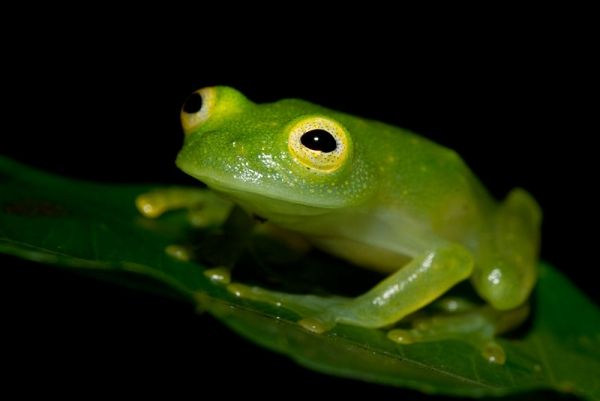Most frogs emit a characteristic croak to attract the attention of a potential mate. But a few frog species that call near loud streams — where the noise may obscure those crucial love songs — add to their calls by visually showing off with the flap of a hand, a wave of a foot or a bob of the head. Frogs who “dance” near rushing streams have been documented in the rainforests of India, Borneo, Brazil and, now, Ecuador.
Conservation ecologist Rebecca Brunner, a Ph.D. candidate at the University of California, Berkeley, has discovered that the glass frog Sachatamia orejuela can be added to the list of species that make use of visual cues in response to their acoustic environments. This is the first time a member of the glass frog family (Centrolenidae) has been observed using visual communication in this manner.
“A handful of other frog species around the world use visual signaling, in addition to high-pitched calls, to communicate in really loud environments,” Brunner said. “What’s interesting is that these species are not closely related to each other, which means that these behaviors likely evolved independently, but in response to similar environments — a concept called convergent evolution.”
Read more at University of California - Berkeley
Photo Credit: Brian Gratwicke via Wikimedia Commons


